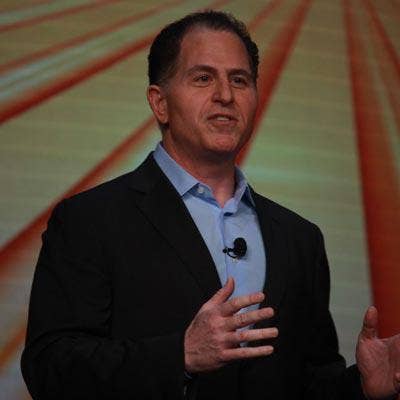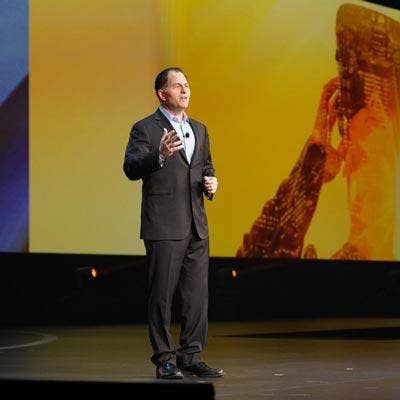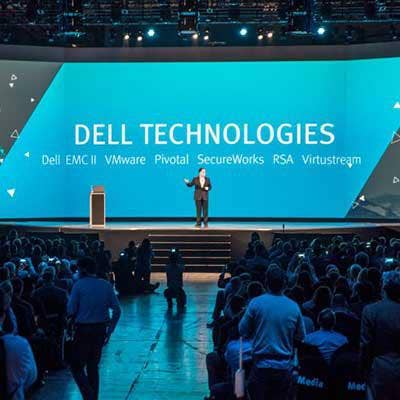WWT Cloud Leader On Public Cloud Cost, Benefits Of Software-Defined Data Centers And Dell Technologies' Unification Strategy

WWT's Vision On Cloud And The Data Center
World Wide Technology's new leading cloud and data center strategist, Jonathan King, is seeing the benefits of software-defined data centers in a multi-cloud world.
"When you look at the move towards software-defined data center and automation, you start to get the kinds of benefits that the public cloud companies have been tapping really since their creation," said King, vice president of strategy, data center and cloud at World Wide Technology, a $10.4 billion solution provider powerhouse and top Dell partner.
In an interview with CRN, the IT veteran talks about WWT's strategy and vision around cloud and the data center, as well as the benefits of Dell Technologies' push to make it easier to buy and sell across its seven brands.

Do you see customers pulling back from public cloud due to the cost as more software-defined data center technologies become available?
Customers are looking at public cloud as a key part of their strategy but are also learning that you have to take into account the way you design your application and how you're deploying in public cloud, as well as what you're running on-premises to make sure you're putting the workload in the right place. If you just lift and shift and move applications to the public cloud and have them arrive in the same way that they ran on-premises, it can cost you more money because you haven't designed or re-architected the application in the environment to take advantage of the design of public clouds. So we see clients experience that, where they're really thinking through how you design, what you're running in the cloud, and also that you're looking at how you can modernize and integrate your offerings with the public cloud as well through an on-premises standpoint. So taking advantage of the latest and greatest software-defined data center capabilities that Dell speaks about, those can give you higher efficiency benefits on-premises, but then also looking at making sure you're designing applications that you do decide to run in the public cloud in the right way to really get the full advantage out of those environments.

Do you agree with Michael Dell's statements that the cloud is not a place, but rather a way of doing IT?
We would agree completely with that. It aligns with the trends that you're seeing where companies either are already doing cloud because of line-of-business or maybe an acquisition started with public cloud, but they're getting access to the kinds of on-demand experience and automation capabilities that come with that. It's caused a rush in some instances to public cloud, but it's also caused a desire to have those kinds of capabilities in their on-premises systems. So they still have a legacy stake they're supporting. They have either regulatory or latency requirements that really demand that they continue to invest and modernize their on-premises or dedicated systems. So now when you look at the move towards software-defined data center and automation, you start to get the kinds of benefits that the public cloud companies have been tapping really since their creation.

What do you think of Michael Dell's statements about hyper-efficient on-premises systems being better for predictable workloads?
Workloads for a long time have been one of the key criteria in considering whether you should put something in the public cloud or keep it on-premises, and as virtualization and now containerization are becoming more common, you can get more and more efficiency on-premises that lets you get a better economy of return. Companies that are looking at more factors that just efficiently -- which is clearly [important] because it's such a big cost driver -- but if you're looking at future efficiency, you might have a reason to [decide] are you going to be hyper-efficient for the full duration of that investment or do you anticipate some expansion to some remote sites? You could be looking at using a co-location provider where you want to get efficiency of not operating the facility, but still controlling the equipment and getting the efficiency of that investment. There are multiple ways that people look at this depending upon the specific business requirements, including efficiency.

What kind of growth and business model are you pursuing in public and private cloud?
Back a couple of years ago, it was public cloud or private cloud. Then it was hybrid cloud. Now people tend to think and talk in terms of multi-cloud and part of that includes multiple SaaS providers. Companies often have one or two public cloud partners and then also they have their on-premises private cloud infrastructure. If you look at all of those as a multi-cloud landscape, what we're doing is we have a very strong portfolio of private cloud competencies and offerings that we can demonstrate for clients in our labs, which we can integrate with our supply chain capabilities, and then do a whole host of integration and training and work to help clients get the most out of that. What we're seeing now as part of this multi-cloud move [is] that Dell itself is looking to be interoperable and integrate with any cloud infrastructure.

What is this multi-cloud strategy?
What VMware is doing with vRealize as a cloud management tool, where they're going with Pivotal as a cloud-native platform environment to help with application development, and then VMware on AWS in terms of enabling an on-premise [offering] to host seamless infrastructure leveraging VMware tooling -- even Dell's portfolio is multi-cloud in that aspect. So we see and are following our clients in a similar way. As we're helping them design their networks, we're helping them design their networks with a multi-cloud world in mind. As we're helping them with their storage strategy, we're helping them think about a storage strategy with a multi-cloud storage world in mind. We're seeing a lot of growth and excitement around those capabilities.

What has the impact been on WWT as Dell expands its software-defined portfolio?
The thing that's powerful about Dell is that they have such a broad and deep portfolio that the more they work to software-define it, the more it comes in line with this bigger trend of companies looking to really modernize and automate their data centers. So when companies look at investing in their systems, having a partner like Dell with the kind of breadth and depth in their portfolio -- and WWT being a close partner of Dell and having the lab capabilities, integration and supply chain capabilities that we have -- the better we are positioned to be really a key partner of theirs in helping deliver to clients throughout their life cycle.

How big a deal is it that Dell is now striving to make it easier for partners to buy and sell across the entire seven companies?
We all do well when our clients do well. What Dell is doing is looking at how they have such a broad portfolio, how can they continue to bring it forward in a way that is purpose-built for given workloads? The breadth of what they have and working to simplify and modernize that portfolio – the number of announcements at Dell Technologies World was quite a lot -- the better coordinated we can be across the portfolio allows us to better meet customer needs. Dell and World Wide Technology all win together. We see good investments from Dell in this way and it's only been increasing.